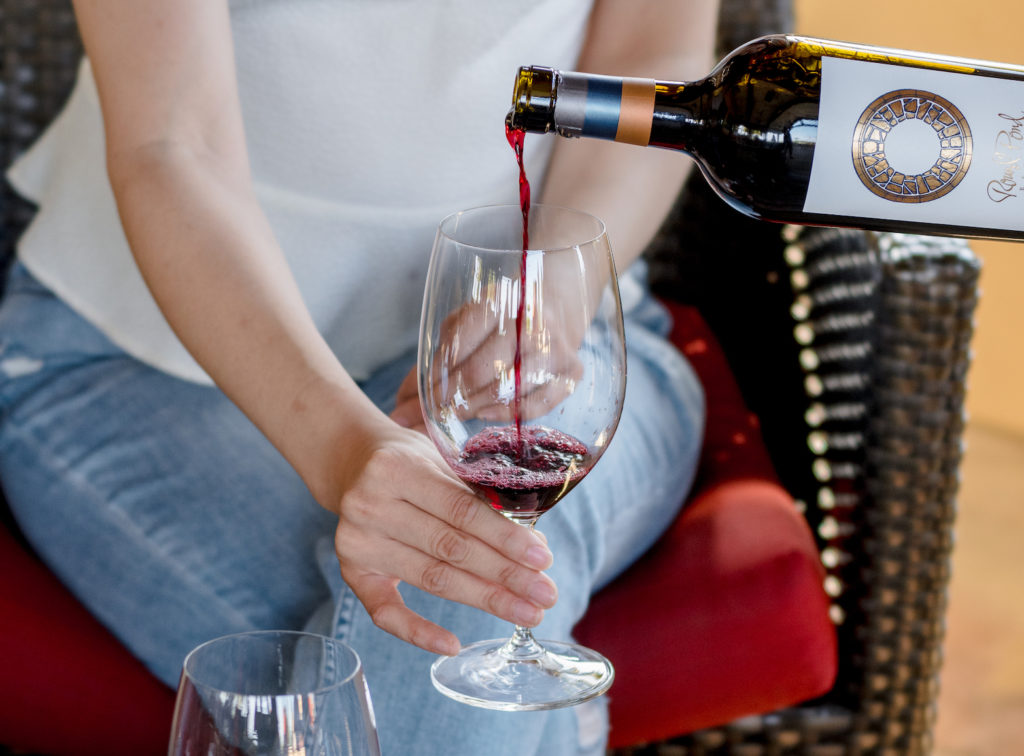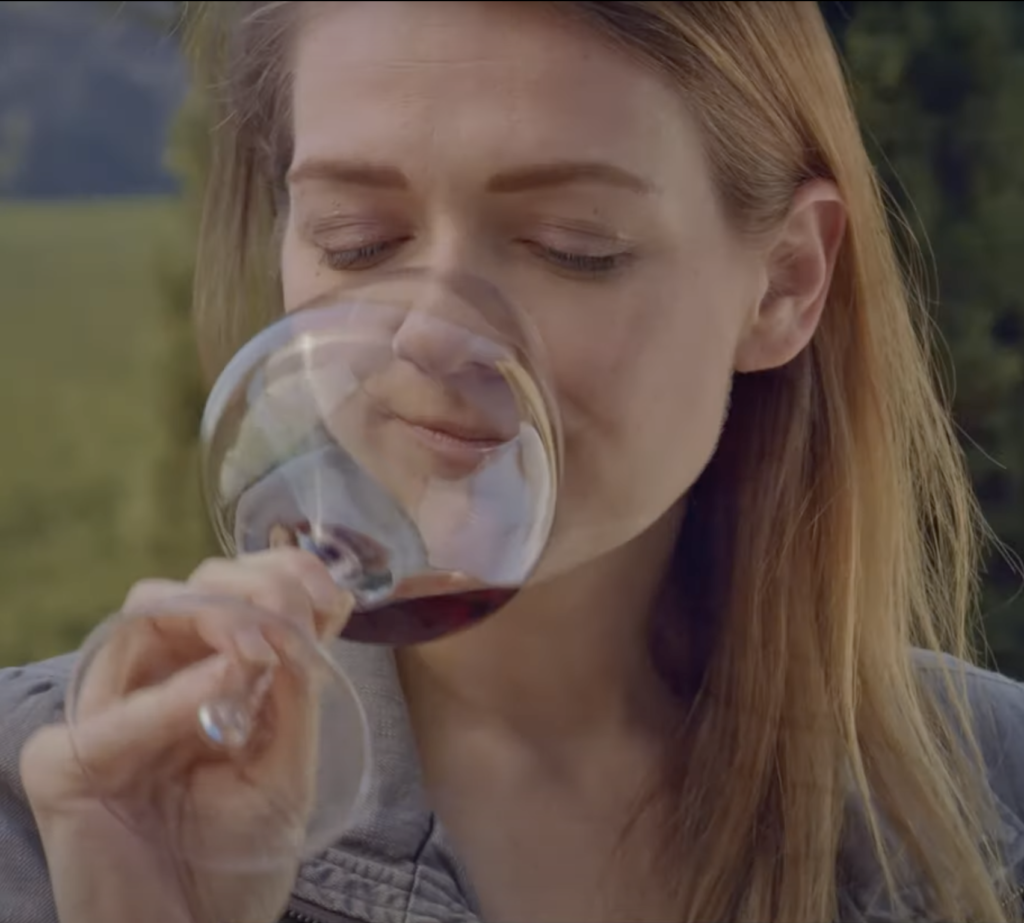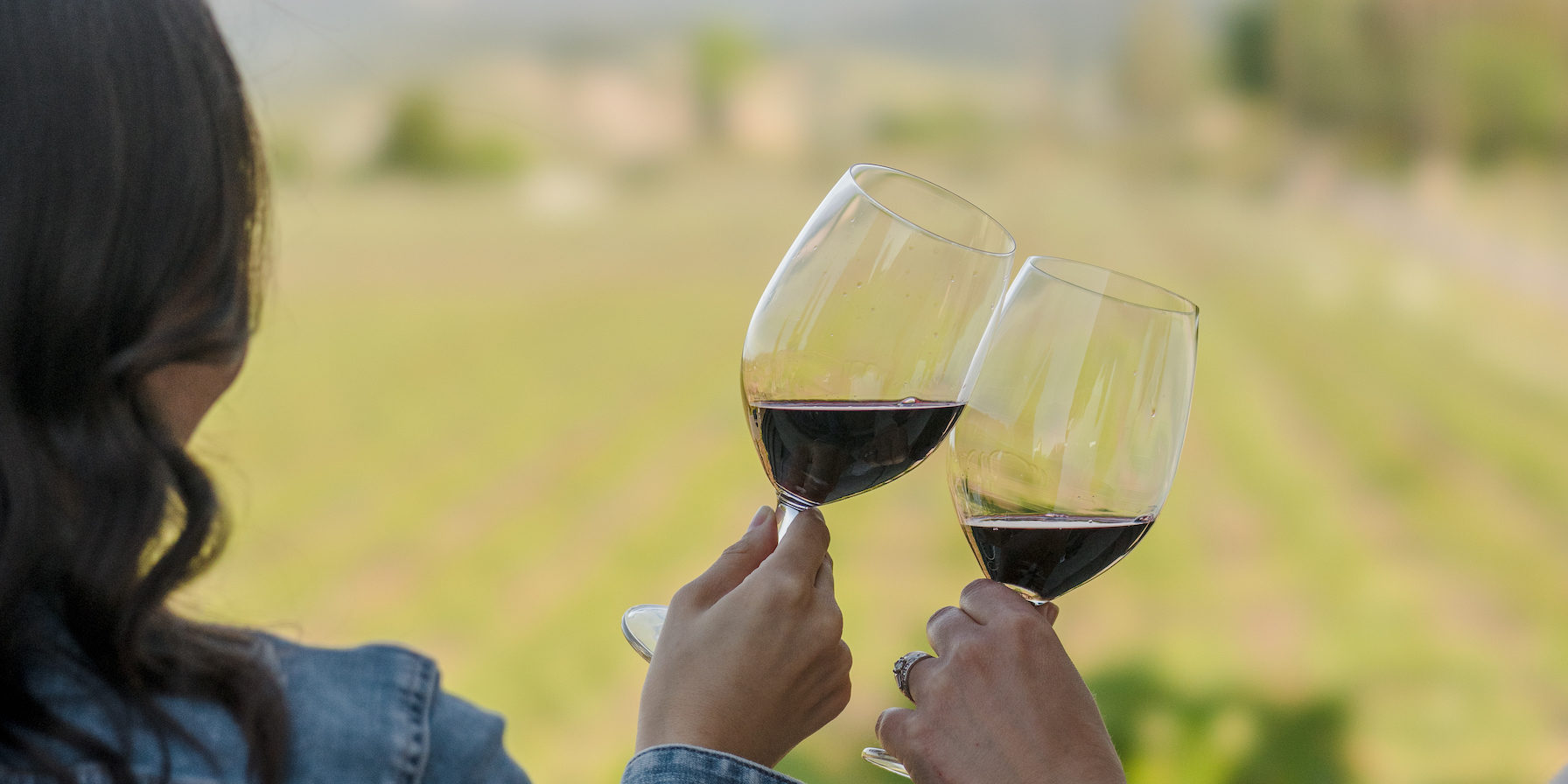The best wine tasting experiences have a perfect balance between enjoyment and education, offering sips of delicious wine without overcomplicating the process. With that said, knowing the choreography of a wine tasting can take your experience beyond the basics, allowing a greater level of appreciation for what’s in your glass.
We like to break down wine tasting to focus on three senses:
SIGHT

The Basics:
Look at your wine. No, really look at your wine. Before taking a sip, make eyes at what’s in your glass. We recommend tilting your glass at an angle, ideally with a white piece of paper or light surface underneath to allow full appreciation of the wine’s color.
Then, give your glass a swirl – gently! – to look at the drips running down the side of the glass. These “legs” or “tears” are an indicator of the wine’s viscosity. (Myth-bust: legs have the reputation of being associated with wine quality, but that isn’t the case.)
The Beyond:
You can learn much more than “red, white or rosé” by looking into your glass. Keep an eye (or two) out for these elements in a wine:
- Clarity – can you see straight through the wine, or is it cloudy? This gives a sense of how the wine was made, as filtered wines are typically more transparent than unfiltered wines.
- Hue – within the larger categories of “red,” “white” and “rosé,” a wine can be a whole range of color, which tells you much about how the wine will taste. White wines range from a star-bright pale yellow to a rich gold. Rosés made from Nebbiolo or Pinot Noir are a paler pink than rosés made from Sangiovese or Syrah. For reds, Nebbiolo and Sangiovese are a lighter, brilliant red that you can see through; Cabernet Sauvignon and other Bordeaux blends are much darker and opaque.
- Color change – as wines age, they begin to change color around the rim of the glass. This isn’t a sign of anything wrong with the wine, but simply an indicator of age: red wines turn brick-red around the edge as they age, while white wines tend to turn a darker gold.
SMELL
The Basics:
Smell, smell, and smell again. A wine’s aroma is the most important indicator of its flavor, and the wine’s aroma changes and evolves as the wine sits in your glass. Smell the wine right when it’s poured in your glass, then swirl and smell again. Swirling the wine volatizes the aromatic compounds, which interact with air and more easily reach your nostrils.
Continue smelling the wine over time and see how its flavors change over time.
*Tip: don’t be shy about putting your nose into the glass and breathing deeply. It’s common to see sommeliers and winemakers with their nose almost all the way in their wine glasses.
The Beyond:
Flavor is more dependent on aroma than taste itself, as our noses are able to intake and interpret far more flavors than our tongues and mouths. When smelling your wine, look for three categories of aroma:
- Fruit – from the snappiest green apple, to the most luscious papapa, to the juiciest pear for white wine; for reds: anywhere from concord grape to Red Delicious apple to the ripest blackberry.
- Spice – oak, pine, cinnamon, licorice and vanilla are just a few examples– picture a anything you’d find in your spice cabinet, including the wood itself
- Earth – from forest floor to slate or even graphite (pencil shavings)

TASTE

The Basics:
Ahh, the blissful moment of finally sipping the wine! The basics here are pretty simple: sip and savor! If you’re enjoying food with your wine, try a sip before a bite of your food, then again after. See how the wine’s (and food’s!) flavor changes based on its pairing.
The Beyond:
When tasting wine, first, think about weight: is the wine light, medium, or heavy in your mouth? This is the wine’s body. Then, think about acidity and tannin: is your mouth watering like you bit into a lemon? Is your tongue dried out, like you took a tip of bitter black tea? This is acidity and tannin. Finally, look for the flavors itself: likely similar fruit, spice and earth notes that you experienced when smelling the wine.
Tip: wine evolves with every second that passes by — even within one simple sip. Don’t be afraid to hold the sip of wine in your mouth or even swish the wine around in your mouth: the wine’s flavors will volatize into your nose (known as retronasal smell). Most importantly, this step is all about enjoyment– so savor away!

